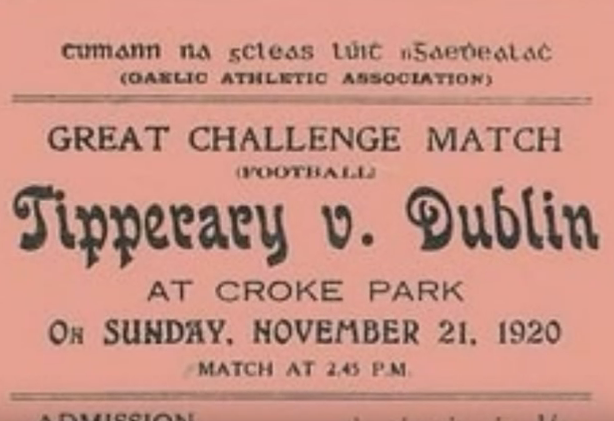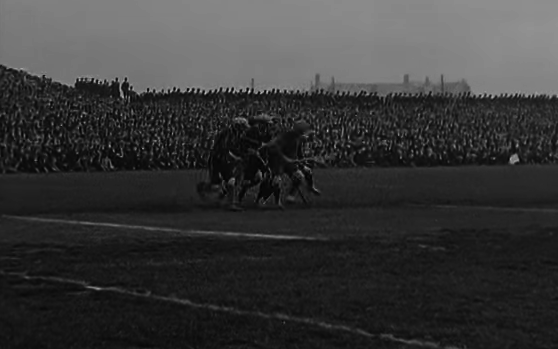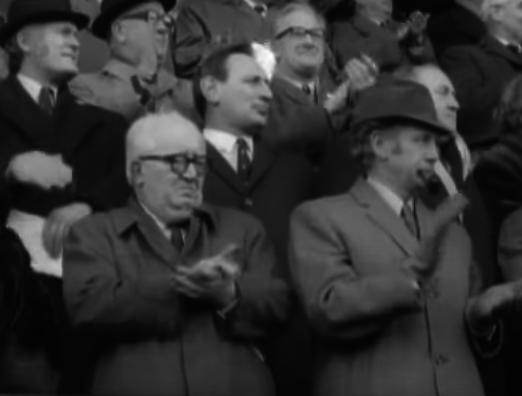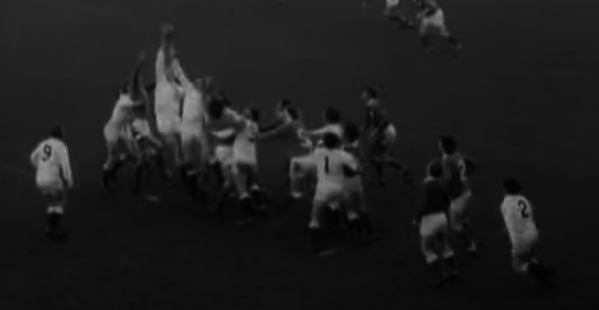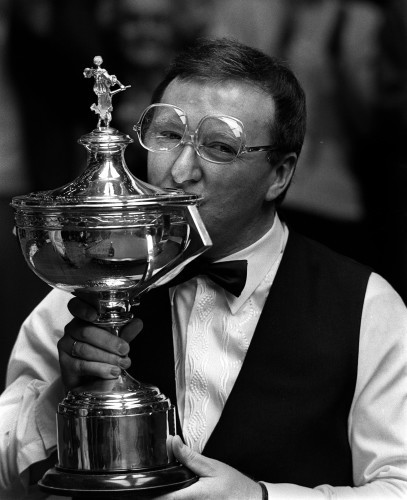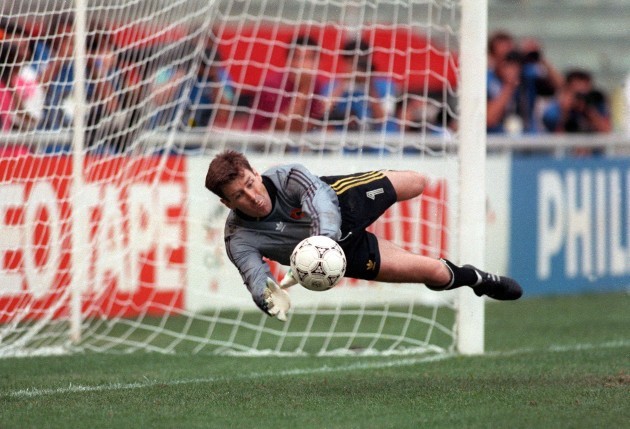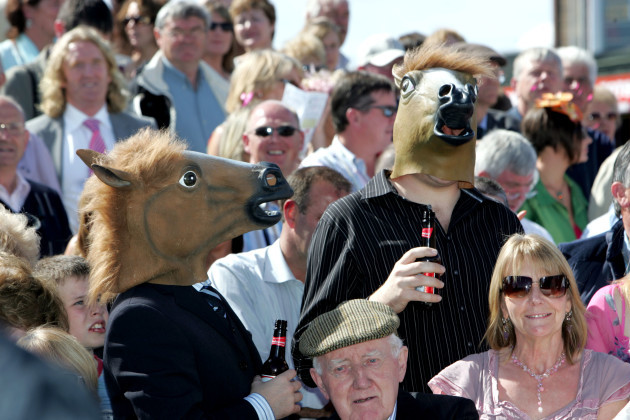
THERE HAS BEEN a good deal of talk and focus on Irish history for the last 12 months. Our past is under the microscope like never before.
This week we reflect and remember the Easter 1916 Rising, the most momentous event in Irish history. A plethora of books and documentaries have come out to mark the occasion.
This Easter Monday, the Irish Grand National takes place, as it did, 100 years ago in 1916.
As major historical events have unfolded in our fascinating but troubled past, a sporting event happened down the road as in 1916 or may have been the central part of historical event itself (Bloody Sunday, 1920) or merely mirrored and provided a microcosm of the momentous or turbulent nature of the times (Northern Ireland v Republic Of Ireland, Belfast, 1993).
Looking back at the last 100 years or so, the story of Irish history can be told through 10 sporting occasions. The delicate and precarious early years of the State through to the years dogged by emigration and economic depression and of course the Troubles can all be reflected and told through famous sporting occasions which can often act as a signpost of a certain time or era and represent the Ireland of that day better than anything else.
As a sports fanatic and lover of Irish history, inspired by Fintan O’Toole and his History of Ireland through 100 objects, this article makes an attempt to tell Ireland’s last 100 years through 10 sporting events. By no means proposing to be a definitive or perfect list, it is a start that will hopefully get others talking.
It Takes All Sorts - The 1916 Irish Grand National, Easter Monday
On 24 April, 1916, it was a bright, pleasant Bank Holiday. Large crowds deserted the city to attend the Irish Grand National or head to the seaside towns dotted around the bay.
Every Easter Monday in Fairyhouse, Co Meath, the Irish Grand National takes place. Popular with soldiers and the establishment in those days, in 1916 Fairyhouse was buzzing with anticipation.
At 11am that same morning, the rebels started to assemble at Liberty Hall.
In total, there was a turnout of about 1,200 men, including about 200 members of Connolly's Irish Citizen Army. This was much smaller than had been expected. Chaos and confusion reigned. There was nothing very surprising in the sight of armed men on the streets. In these years, the public has become accustomed to the sight of the Irish Volunteers drilling and parading.
The story of 1916 cannot be told without reference to the Grand National, and it has been claimed by many historians that the rebels took advantage of the quietness in the city to strike that day. All sorts of rebels turned up from nationalists to socialists to romantics. Later that afternoon, messengers were sent to Meath to inform the officers when it became clear this was no practice. Hundreds of racegoers were stranded, including British Army, as trains were cancelled.
What happened next is probably the most famous historical event in Irish history.
The 1916 Grand National will forever be remembered as the day the Rising broke out. All Sorts won the big prize that day.
21 November 1920 – Bloody Sunday: Dublin v Tipperary, Croke Park.
Entering the winter of 1920, the GAA found itself in a complicated place in Irish society.
The organisation’s various policies of ‘banning’ were not universally supported throughout its membership. Bans against members playing foreign games, serving the crown in uniform and particularly controversially – a ban on civil servants taking an oath of allegiance to the crown in 1919 were issues of continuous debate.
It was following one such debate on the 21 November 1920 that a game between Dublin and Tipperary was scheduled to take place in Croke Park. One attendee of that meeting, General Secretary of the GAA Luke O’Toole, was faced with one of the biggest decisions of his life that morning.
This was no ordinary morning in Dublin. Tension had been building for a while and Michael Collins was leading a bloody guerrilla attack on the establishment that would provoke a fierce and brutal response. Collins would not take on the British face to face, preferring hit-and-run attacks.
Under the command of the legendary Collins, 14 British agents were killed by the IRA; an attack which was intended to paralyse the British intelligence services and give the IRA the upper hand in the ongoing War of Independence.
One of the assassins that morning, Johnny McDonnell, would line out for the Dubs later that day. A serious escalation in an escalating war, this attack would not go without reprisal. For those who had heard the news, the prospect of 5,000 spectators in Croke Park was an uneasy one.
Under pressure from the IRA to cancel the match, but adamant that the GAA would never kowtow to a surrounding political climate, O’Toole decided that the game would proceed.
30 minutes after the scheduled start, the match got underway. The reprisal was immediate and indiscriminate. The first shots were fired as soon as the police came through the turnstiles, 10 minutes into the game at 3:25 pm.
14 more lives would be lost as the sun began to set on that particularly gruesome Sunday. Ninety seconds of relentless police shooting killed seven instantly, five more dying later after two others had been stampeded to death by a desperate crowd seeking refuge, somewhere. Among the dead was Tipperary full back Michael Hogan.
Fighting would continue for quite some time after this day. The death toll reaching unprecedented proportions before the divisive Anglo-Irish Treaty was signed in December of 1921.
And while a determined GAA could not prevent a bloody intrusion that afternoon, today the Hogan Stand towers over north Dublin – a symbol for an association which persevered through the brightest and the bleakest hours of its nation’s history. The GAA’s role in 1916 had been overstated, but it was now very much part and parcel of the war of independence. Croke Park was now home to the GAA but also synonymous with tense Anglo-Irish relations.
3. 1932 Tailteann Games, Catholic Ireland and the Economic War begins
1932 witnessed the biggest single declaration of Irish Catholicism and marked the start of the Economic War with the UK, under De Valera’s watch.
A lot had happened in late 1920s after the Civil War and the years leading up to 1932 as Ireland matured post the horrific and bloody Civil War and the wounds slowly healed.
The 1927 assassination of Kevin O’Higgins in Booterstown was seen a major turning point and the 1927 election saw the establishment of Fianna Fáil as a participant in the Dáil, taking most of the support and many of the members of the abstentionist Anti-Treaty Sinn Fein. The impact of this shift was to remove pro Treaty Cumann na nGaedheal's working majority among TDs attending, making the Dáil short-lived.
The Irish Free State, born out of a nationalist revolution in 1919-1923, had its own Olympics or Tailteann Games, which ran from 1924 to 1932, intended as a tourist attraction, as well as a demonstration of the new state’s independence and national identity. In practice, the Games highlighted many of the contradictions and divisions within Irish nationalism. They have long been forgotten but are fascinating from an Irish sporting history perspective as several great historians like Dr Paul Rouse have highlighted.
The Games were presented as a revival of an ancient Irish custom, crushed by the English invaders, and were the globe’s biggest sporting event of 1924, bigger than the Paris Olympics. 20,000 showed up for the opening ceremony and “athletes” competed for everything from poetry and drama to golf to tennis and clay pigeon shooting diving and even swimming in the pond in Dublin Zoo. 140,000 spectators turned up with the athletics and cycling in Crake Park proving popular.
Fianna Fáil and DeValera were in power in 1932 and enthusiasm had waned for the games. DeValera went about changing our relationship with the UK. The Economic War began in 1932 which was financial, political and economic in nature and would last six years with special duties on Irish imports such as cattle and dairy. Unemployment was rife both North and South. DeValera declined to pay land annuities to the UK and abolished the Oath of Allegiance.
The same year, the 31st International Eucharistic Congress was held in Dublin in June. Ireland, then home to over 3m Catholics, was selected to host the congress on the 1500th anniversary of Saint Patrick's arrival. 25% of the population attended the final mass in Phoenix Park, a startling 500,000 people gathering on O'Connell Street for the concluding blessing given by the Papal Legate, Cardinal Lorenzo Lauri.
1932 was the last of our “Olympics” and a year that DeValera started the Economic War and antagonized relations with the UK further as the nation set about trying to establish its identity. Grand displays of Catholicism and distancing itself from Britain were the tools chosen.
4. 1939 September 1 War in Europe: Kilkenny v Cork - A Very Irish Battle Amid a Very Global War - Blitzkrieg and Thunder and Lightning
The German invasion of Poland on September 1st 1939 and the ensuing chaos in Europe was the first test of foreign policy for a young Irish Republic.
As a Nazi torrent began its trail of destruction throughout the continent, normal service resumed on the first Sunday of September in Croke Park. Cork and Kilkenny hurlers were preparing to face each other in their first title meeting since an epic three-part contest in 1931.
Abiding by their traditional Sunday rituals, much of the Irish population and many of the 39,300 spectators making their way to Croke Park weren’t yet aware of Chamberlain’s early declaration. Remembered in GAA history as ‘The Thunder and Lightning final’, the intensity of the game is understandably overshadowed by the battering the players and fans received from the storms, and the looming spectre of a cruel gale sweeping Europe.
The day before the match, the word neutrality was being used up and down the island as people considered an Irish role in a hypothetical war. After the game, with a very real war underway, it fell upon Taoiseach De Valera to reassure a war-weary people, not yet sure about the future of their nation. His 7pm 1,000-word broadcast spoke of unity, discipline and ‘nothing to fear’. Forty minutes later, 117 civilians travelling on The Athenia liner were obliterated by a U-boat north of Tory Island.
This categorised ‘neutrality’ for Ireland – officially out of the war, but jammed in the centre of the conflict. An uneasy dance as we asserted our independence but assisted the war effort where we could.
US convoys would pass through Ireland on their way to Britain, thousands of Irish men joined the British army, and while on the face of it De Valera resisted then Prime Minister Churchill’s incentives to join the war effort, Ireland played its own small role.
Ireland’s unique position rankled with and annoyed the British. Churchill in particular. The damage to the nations’ relationship would be felt for a long time after the defeat of the Nazis. In Croke Park that day, there was a score to settle before a population still scarred by civil war could consider its place in an unprecedented bloodshed.
A young Jack Lynch’s Cork would be defeated by Jimmy Walsh’s Kilkenny – a point in the final minute ending the game. Against a backdrop of electricity and eruption, the sliotar and the hurley moved as furiously as ever as 30 men waged a very Irish war, momentarily ignorant of a planet on the brink.
Blitzkrieg in Europe and thunder and lightning in Croke Park.
5. 1950s Ireland – Dublin v Kerry All-Ireland Final 1955
The 1950s in Ireland have often been dubbed a ‘lost decade’ or a decade better forgotten. Emigration and huge unemployment were once again the dominant themes as commentary is dominated by references to austerity, near bankruptcy and political instability in stark contrast to the “golden age” of the 1960s.
In the dark days, some great artistic achievements occurred. It was during this decade that Behan’s ‘auld triangle’ jangled. Kavanagh’s unforgiving texts would begin to be appreciated. Samuel Beckett would write of ‘Godot’ from afar. Beckett, having moved to France, would be joined abroad by around 57,000 Irish men and women in each year of the 1950s. The predominance of poverty and hardship in much of Irish art of the time was certainly not fantasy.
And still the GAA threw up heroes amid the dread.
The century’s most epic football battles have been punctuated by a Dublin/Kerry rivalry, particularly remembered for the duels of the 20s and more significantly the 1970s and most recently 2011 and 2015.
In 1955, Ireland joined the UN and the National Farmers’ Association was formed. The final of ’55 offered up an escape and an opportunity for Kerry to draw level with Dublin in head-to-head finals; Dublin had been leading 3 – 2 going into the clash. A late Ollie Freaney goal for the Dubs was not enough to keep Kerry from winning the game on the day – winning with 12 points to Dublin’s 1-06 in front of a record-breaking crowd of 87,102.
On the other side of the Atlantic while Marilyn Monroe tussled with Joe Di Maggio, many Kerrymen and Dubs would hear news of the final score filtering through.
A fellow emigrant made his mark on the game itself, though. New York resident Dr Jim Brosnan, having been flown home, scored two vital Kerry points towards the end of the game to win his second All-Ireland senior medal. His reason for travel was neither business nor pleasure, but dedication, clan and duty – a pull Ireland and the GAA has often retained, inspiring hope in the face of the chaos surrounding it.
6. 1973 Northern Ireland Troubles, Dublin Bombings and Ireland v England 5 Nations – Feb 10, 1973
Ireland versus England rugby matches have a special place in the hearts of Irish people and several matches have coincided with fascinating episodes in Irish history.
There are few games since the first clash between the sides in rugby in 1875 that rival the momentous 2007 game in Croke Park but the 1973 game in Lansdowne Road surpasses it.
The 1960s in Ireland had seen relative economic boom and relief from previous years of hardship as the policies of protectionism were abandoned and the country was opened up to international trade and industry. RTÉ television began on the last day of 1961. The 1960s also saw the end of censorship in Ireland, and the provision of free post-primary education. JFK visited while in Europe, student movements came to a crescendo in 1968 and the first man walked on the Moon in ’69. The Troubles started, prompted by the Civil Rights movement.
By the early 1970s, Northern Ireland was in turmoil and huge tension and uncertainty prevailed as the province was literally burning. 1970 onwards saw an explosion of violence, peaking in 1972 with 500 deaths, over half of which were civilians. 1972 saw the greatest loss of life throughout the entire conflict. “No Go” areas existed in Republican strongholds which were IRA controlled.
The newly-formed Provisional IRA was determined to wage an armed struggle and defend the vulnerable Catholic minority. 1971 witnessed the introduction of internment and the all 350 detainees were Catholic; allegations of torture and brutality were widespread. Gun battles on the streets were commonplace and one of the most infamous incidents of the Troubles, Bloody Sunday, occurred in January 1972.
The IRA would kill 100 soldiers in 1972, wound 500 more and carry out 1,300 bombings in its most active period.
The UVF became more active and responded with sectarian violence and assassinations of nationalists. The Shankill Butchers were a particularly gruesome exponent of torture and murder in this period. Nationalists and Unionists moved on or were displaced en masse to safer areas as community relations soured and Direct Rule from London was introduced.
Dublin was not immune from the bloodletting and deaths. Bombs went off in November 1972, December and January 1973 causing death and injury.
With the violence showing no sign of abating, it was against this backdrop of mayhem, bloodshed and sectarian violence that the annual Rugby 5 Nations competition was about to begin.
As it so happened, it was England’s turn to come to town.
The previous season, both Wales and Scotland refused to travel to Dublin to play, denying Ireland a rare chance of a Grand Slam after away victories against France and England; the 1972 Championship went unfinished.
The RFU bravely bucked the trend, taking the decision to travel to Dublin.
It has been largely forgotten that four English players declined to travel. Lock Nigel Horton, a serving policeman; scrum half Jan Webster; full back Sam Doble and lock Peter Larter, a serving RAF officer remained at home.
The two teams were due to enter the field together, in a sign of solidarity, but such was the wave of emotion within the ground that an ovation for the English team from the 50,000 supporters occurred as they entered the field. Ireland won the match 18-9, with a very nervous England missing several chances.
As England captain Pulin said post match. “We may not be any good but at least we turned up.”
Doubts about the game going ahead showed how perilous Ireland was in the early 1970s and this game featured right in the middle of the worst of the violence at the start of the Troubles which would cause so much bloodshed in the coming two decades. 1972/73 was a particularly vicious time.
The Ireland-England rugby game more than any other sporting event at the time illustrated just how dangerously uncertain that period was.
7. The 80s – Dennis Taylor versus Steve Davis (1985)
Perhaps unfairly associated with dimly-lit, smoke-filled rooms and misspent youths, there is perhaps no better symbol for the bleak 80s than the snooker stereotype.
The 1970s ended with the Pope’s visit and that outpouring of emotion and unashamed display of Catholicism. The new decade was ushered in by the deaths of 10 men from the north on IRA hunger strike in 1981. In the south, unemployment would reach its grim peak in 1985. More political uncertainty. More emigration. More bloodshed in the North. Strong Church. Uncertain State.
The country’s youth demographic was redefined as the ‘brain drain’ took hold. At the turn of the decade, around 8% of college graduates sought work outside Ireland, this had risen to 30% as the 80s drew to a close.
The constant murmurings of a Cold War would reverberate around homes from wireless and television sets in an Ireland not yet entirely consumed by capitalism nor particularly threatened by communism. Through these television sets, the grey faces of Thatcher, Reagan and Haughey vied with the vibrancy of Madonna and Michael Jackson for influence – but on the night of 28th April 1985, the focus was solely on two men; Dennis Taylor and Steve Davis.
18.5 million people watched the final live on BBC 2 – still a record for the channel, and still the largest post-midnight audience for any channel in the UK. This side of the water, generations of families would stay up to watch the mild-mannered, unusually bespectacled Taylor from Coalisland take on the world No. 1 Davis for an eye watering sum of £60,000.
Played over two days, Davis rushed to an 8 – 0 lead on the Saturday afternoon in a best of 35 contest. Going into Sunday, Taylor had somehow managed reduce the gap to two frames, with Davis leading 9 – 7. Taylor sustained his comeback by keeping up with Davis, levelling at 11 – 11 and later at 17 – 17 going into the final frame. Not once did the Irishman take the lead in the 34 frames.
Snooker’s ‘80s grip on a nation seems at odds with the sport’s struggling status today, but this was a sport of alcoholic excess, of the wild Belfast man Alex Higgins and the Canadian heartthrob Cliff Thorburn – seducing a population finally able to visualise an end to a church-imposed sexual starvation.
1985, the midpoint of the 1980s, was the year that condoms were allowed to be sold to over-18s without a prescription. Ireland was slowly moving out of the shadow of sin, although it would still be 8 years before homosexuality was legalised. Yes, being gay in early 1980s Ireland was a crime.
That night’s protagonists were quite unsexy, however, the final frame a gruelling 68-minute wait for either man to allow millions to sleep.
For the first time in history, the title would go down to the very last ball – the black. After a tense battle, Dennis Taylor went ahead in the game for the first time. Wagging his finger in victory, it’s perhaps the least pompous ‘I told you so’ in the annals of sport. His restrained, tip-toed kiss of the trophy a more Irish, Catholic celebration, unsure of how to process such emotional pleasure. This success of an Irishman on a big stage, provided much needed relief for a country still trying to find its way through another difficult time.
A Nation Holds Its Breath and takes its place on the World Stage: Italia ’90, the good times begin
Riddled with economic instability since its inception with more bad times than good, the Republic of Ireland was looked upon with pity by other, more fruitful nations.
Mass emigration and unemployment had been such a constant since 1922 that they had arguably penetrated the Irish psyche. We had charm, romance, pubs, music and culture but little was thought of our potential as an economic player.
The 90s was something of a rebirth for Ireland and the Irish, and it was announced with our first ever foray into the football World Cup – Italia 90. We had the brilliant and epic journey that was Euro ’88, but this was even better.
To say that the World Cup was a symbol of the nation’s new found confidence would not be far off the mark, but it would be easy to overstate the sporting achievement itself. The fact is that the Irish team didn’t actually win a game, and lost to the hosts in the quarter finals via a tense penalty shootout with Romania. Nevertheless, mere qualification had sent the nation into an understandable frenzy of anticipation, and the culmination of the 3-week journey was celebrated all over the country as if it were victory.
Of course economic stability did not come overnight, but the recovery was staggering.
The unemployment rate reached its peak at 17.3% in 1985, plummeting at the end of the 90s to 3.7% in the year of the millennium. And so the term 'The Celtic Tiger' was coined.
Export-oriented multinationals flooded the Irish market – particularly US companies – availing of an educated English-speaking workforce. The average house price rose from €67k in 1991 to €331k in 2007.
It wasn’t just money either; U2 started working with Brian Eno, Sinead O’Connor became a household name and Guinness dropped the myth of its nutritional value in favour of more entertainment-based marketing tactics. Ooh Aah Paul McGrath.
Yes, we all know what happened next...
There is perhaps a more significant symbolism in the mass hysteria which surrounded the Irish World Cup journey.
For a nation that had been so internationally defined by its conflict with the British and the crises of identity which pervaded its innermost core and its very geography, this was a team whose manager was a 1966 England World Cup hero, a team which was represented by a majority of English-born players. Irish people adored Jack Charlton and those second and third generation Irish players born in the UK.
On television screens in every country people watched on as a multi-racial Boys in Green went further than anyone expected.
It would be foolish and over simplistic to suggest, as some have, that Italia ‘90 was directly responsible for an economic upturn, but it could be argued that it gave Irish people confidence at a time when things were just starting to get better. Prosperity beckoned.
1993 The Troubles and Northern Ireland v Republic of Ireland
Even if the historical context is forgotten momentarily, 17 November 1993 was always certain to be a night of anxiety for football fans. This was the final night of qualification stages for World Cup ’94 before the concept of playoffs, and so every moment of the game was riddled with anxiety.
A battle-hardened Republic were vying for qualification for only their second World Cup, but competition was intense, with Denmark and Spain also battling to go through. A Republic of Ireland victory would ensure qualification while a draw was an extreme ‘maybe’. Their rivals, Northern Ireland, had nothing to play for ‘on paper’ but most of the paper in Belfast had already been set alight long before kick-off.
In a time when Belfast had become a byword for ‘warzone’ much like Beirut, Basra and Baghdad at various stages of the century, the game was certainly not a welcome tonic. The two sides would face each other in the immediate aftermath of one of the most horrendous and gory tit-for-tat battles of the troubles.
On 23 October 1993, the Provisional IRA killed eight Protestant civilians and one Ulster Defence Association (UDA) member, bombing a fish shop in the Loyalist heartland, the Shankill Road. One of the IRA bombers also died.
Promising revenge, the UDA would go on to kill three Catholic civilians, one of whom was a delivery driver lured to a bogus drop-off. Just three weeks before the game, the UDA carried out its most brutal revenge attack in Greysteel; a nationalist area outside Derry city. Eight civilians were killed when paramilitaries rattled bullets into a crowded pub on Halloween night.
Despite a comfortable first half, the Republic diced with elimination as veteran striker Jimmy Quinn put Northern Ireland ahead after 71 minutes. Billy Bingham’s boys were making up for the perceived disrespect shown to them and previous heavy defeats at the hands of their arrogant southern neighbours.
The Republic were saved five minutes later by Manchester-born Alan McLoughlin, prompting Charlton to remark that the midfielder had ‘justified his existence’.
USA 94 remains one of the Republic of Ireland’s most joyous footballing memories; images of an ecstatic, sun-soaked green army almost wiping the memories of a ghastly night in November when even the most dedicated fan stayed at home.
Just as the 1973 rugby game between Ireland and England came during one of the most bloody years at the start of the Troubles, the 1993 match, 20 years on, would signal another bloody year, but thankfully as the Troubles trudged towards an end. In spite of an IRA ceasefire the following year, more lives would be lost on both sides because of an incomprehensible, visceral hatred which laid itself bare that night.
The 2007 Galway Races and Ireland v England in Croke Park
2007 was a famous year for Irish sport and probably the last loud bang of the boom.
A new-found confidence after years of success and financial gain saw the GAA open the doors to rugby and soccer while the old Lansdowne was being rebuilt, in a move that would have been highly unlikely only a decade before. Ireland lost narrowly to a Vincent Clerc-inspired France in the first ever rugby game in Croke Park before trouncing England.
Looking back almost a decade on, the momentous nature of the game has been lost by some. The same stadium was the site of ‘Bloody Sunday’, where Tipperary captain Michael Hogan and 13 others were killed during an atrocity committed at a Dublin v Tipperary match in 1920.
The English team were well aware of the context; former Ireland international full-back Conor O’Shea was brought to give a talk on the historical importance of the occasion.
However, despite everyone making the right noises in the run-up, there was a nervous tension in the Dublin air. How would the Irish crowd react to the English anthem? The place was full of symbolism, as sporting venues tend to be. Ireland’s history is full of symbolism.
In an unconscious echo of the famous game of 1973, the anthem was applauded loudly and for a sustained period by the entire stadium. The Irish anthem was then belted out with emotion and pride.
It was a magical occasion and for once, the players responded in kind with a magical display and a hammering of the old enemy by 43-13. A confident nation had acted with self-belief and maturity. A nation that had enjoyed the good times and felt big enough to have the confidence to move on.
However, despite the momentousness of that game, did anything represent the champagne-swilling excesses of Celtic Tiger Ireland more than the money splashing escapades at the Galway Races?
Shopping trips to New York, bumper new car sales, private helicopters, Cheltenham Races, fine wine, apartments in Bulgaria and of course the ever-soaring house prices, the favoured topic of the chattering classes, were signals too.
The excesses of the new found-wealthy were on display in the K Club the year before as an Irish backboned Ryder Cup team beat the US in style in the opulent surroundings in Straffan. However, nothing looked or felt like the Celtic Tiger more than the Galway Races and nothing seemed to smell so rotten in hindsight as the hospitality and back slapping in the Fianna Fail tent.
The clearest indication of an end to the Celtic Tiger and the decline of the once great Fianna Fail was the decision to take away the infamous tent.
What was once the party's biggest fundraiser of the calendar year, raising up on €100,000 from selling 500 seats at 48 tables on each of the four days of the racing festival, is now a thing of the past. A table of 10 used to cost €2,500 on the Monday and Tuesday and bumped up to €3,500 for the Galway Plate day on Wednesday and Ladies Day on the Thursday. How the good times used to roll.
The Mahon tribunal went into full swing in late 2007 and in early 2008, new Fianna Fail leader Brian Cowen cancelled the FF tent for first time in 15 years…the good days were nearly over. The wild excesses of the 2000s, most vulgarly on show in Galway, came to a halt as the economy fell over the cliff.
In many ways, the nation’s self-confidence was on show in Croke Park that day in March, but it was August in Galway which signaled the last dance for the Celtic Tiger cubs.
By Mick O’Keeffe, CEO of PSG Communications and Michael Quinn, a PSG Graduate.
